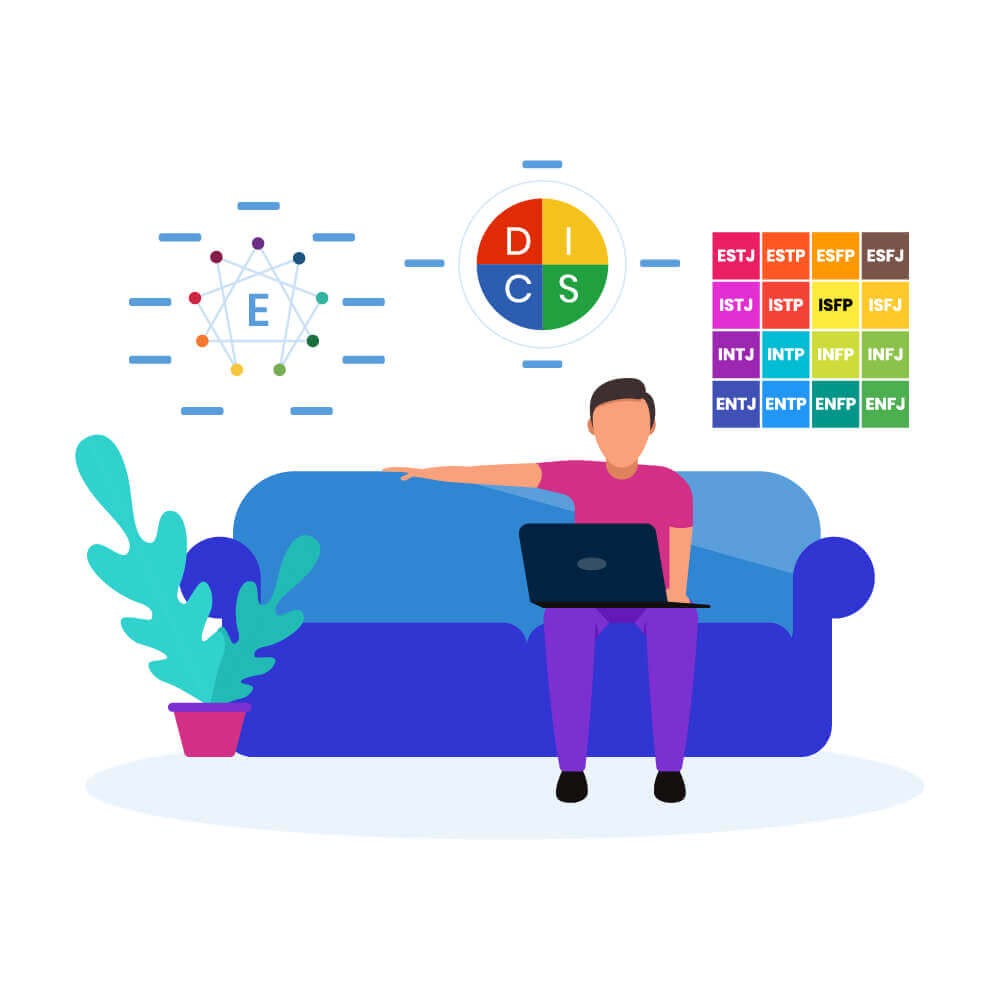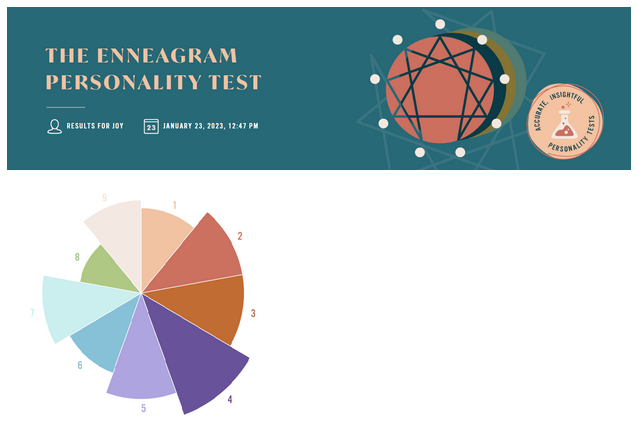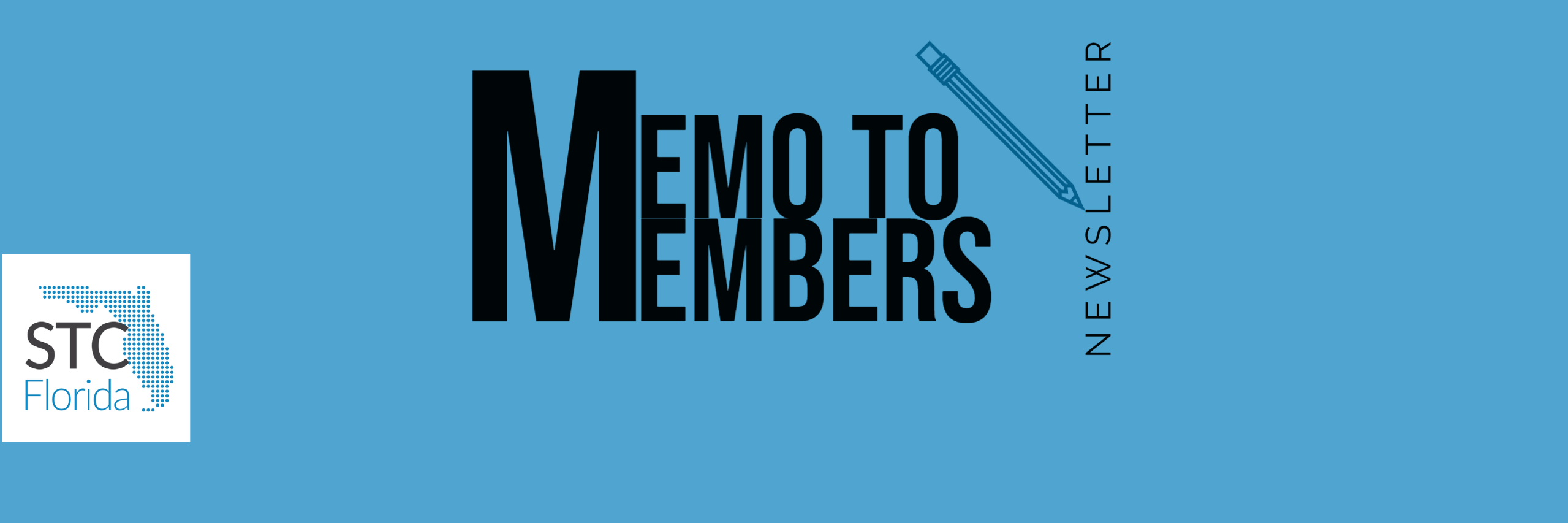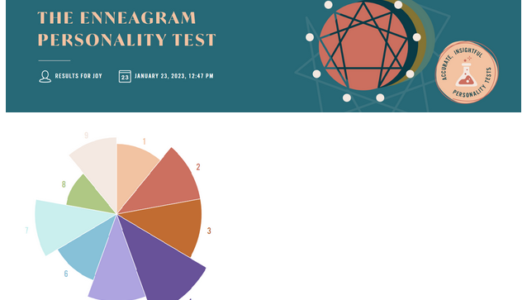By Julia Southwick, Bethany Aguad, and Joy Carandang

The first article in the series focused on the Myers-Briggs Type Indicator (MBTI) personality test. In this one, we turn to the Enneagram. From its history to what it is to our results to how it applies to our profession, here’s a bit about the Enneagram and tech comm.
History of the Enneagram
The earliest origins start with the moon, Jupiter, and Saturn which are the three brightest celestial bodies at night. Every 20 years Jupiter and Saturn meet three times creating three equilateral triangles. Pontius Evagrius interviewed monks and found there were eight types of monks influenced by the seven deadly sins and passions. He was also familiar with Greek Geometry; Pythagoras’ triangles, Platonic hexagons, and Euclid’s circles. He combined different schools of thought including the above and the sacred number nine (nine aspects of deity, nine Greek muses, nine Celtic gods, nine Egyptian gods, etc).
Evagrius’s ideas were built on by Ramon Llull. Llull created the first Enneagram diagram using the reasoning there are nine qualities of God and put God’s essence in the center of the diagram. Llull also coined the term Enneagram from the Greek words “Ennea” meaning nine and “Gram” meaning points. This diagram was improved upon by George Gurdjieff into the modern diagram. Oscar Ichazo took all of that and placed the seven deadly sins (plus two) on the Gurdjieff Enneagram in the right order. One of Ichazo’s students, Claudio Naranjo, brought the Enneagram to the US and introduced Panels as a form of teaching.
Enneagram Explained
Dr. David Daniels added to all of the above three centers of intelligence: the mind/thinking, heart/feeling, and body/instinctive centers. Each center asks a question. The questions are, in order, what can I learn, am I loved, and am I safe. Each center has three of the nine types. The mind center has types one, eight, and nine; the heart center has types two, three, and four; and the body center has types five, six, and seven. The types have specific names as well, I will be pulling descriptions from the Enneagram Institute and numbering them according to which number on the enneagram it is.
- The reformer is rational and idealistic: principled, purposeful, self-controlled, and perfectionistic.
- The helper is caring and interpersonal: demonstrative, generous, people-pleasing, and possessive.
- The achiever is success-oriented and pragmatic: adaptive, excelling, driven, and image-conscious.
- The individualist is sensitive and withdrawn: expressive, dramatic, self-absorbed, and temperamental.
- The investigator is intense and cerebral: perceptive, innovative, secretive, and isolated.
- The loyalist is committed and security-oriented: engaging, responsible, anxious, and suspicious.
- The enthusiast is busy and fun-loving: spontaneous, versatile, distractible, and scattered.
- The challenger is powerful and dominating: self-confident, decisive, willful, and confrontational.
- The peacemaker is easygoing and self-effacing: receptive, reassuring, agreeable, and complacent.
Each type has “wings” and directions of stress and growth. These can be seen in the graphic. An example is that type nines, the Peacemakers, could have a wing of type one or type eight meaning that of the adjacent types, they lean towards one over the other. Continuing the example, when Peacemakers are stressed, they disintegrate into a type six, the Loyalist, and when they are secure, they integrate into a type three, the Achiever. Disintegration and integration mean they take on the traits of the other type, in other words, the Peacemaker “becomes” the Loyalist or the Achiever temporarily.
In working with the enneagram, we can learn to integrate all of the centers to create balance within ourselves. We all have some of each type in our personality but tend to lean more towards some than towards others. Which type we lean towards most determines what our Enneagram type is. There are several ways to take this test for free, we recommend using Truity. Additionally, you could listen to Sleeping at Last’s “Mind”, “Heart”, and “Body” to figure out your primary center and their album Atlas: Enneagram to figure out your type- the song you relate most to is likely your center or type.
…But What Does This Have To Do With Tech Comm?
The Enneagram is about empathy and connection. Much of our work as technical communicators relies on our collaboration with others. Those interpersonal relationships drive our success on the job. Learning about our enneagram types provides useful language for technical communicators to understand how we interact with others and how we want them to interact with us.
Knowledge about your enneagram and others’ enneagrams can be used to connect with teammates, SMEs, and others in our companies and profession. This can provide the tools we need to convince others why tech writers are needed and why some decisions need to be made for our documentation.
Personal Example: Bethany
I have taken the enneagram test a few times and I am most reliably an eight: the challenger. This does click with how I see myself and how I think others see me as well. Type eights are described as “confident” and “independent” with a desire to advocate for others.
I believe those who know me well would probably agree that I am “confident and assertive.” My natural “bossiness” (according to my mother) has long been a hallmark of my personality but for many years I felt less comfortable being direct.
I do reflect on how my time in STC has encouraged me to be willing to stand up for myself and others and what I believe in. Being a part of the mentoring program and later the Leadership Development Program provided me with the tools to harness my skills and apply them to my work.
Reflecting on the weaknesses of this type, I think my tendency to function primarily as an individual has been softened by time in STC. As a collaborative community, the Florida chapter thrives when we work together towards common goals. I am grateful for how I have learned from working with others to soften my message and lead with empathy as Julia does.
Personal Example: Julia
I created a graphic to illustrate my enneagram chart by taking a screenshot of Truity’s results page and moving elements in paint/PowerPoint to create a better viewing experience. I’m still exploring what my typing means to me, but I agree with what the graphic shows. I’m a type two, the helper, with a one wing, the reformer. Primarily, I’m in the heart center with my secondary center being the mind center, based on the helper being in the heart center and also which songs I identify with most.
I enjoy helping others, tend to prefer helping others, and tend to focus on helping them instead of letting them help me. I’ve been slowly getting better at asking for and accepting help when I need it. Like most twos, I’ve noticed I tend to have trouble making and maintaining boundaries. My boundaries never made me a complete pushover, but still needed work- which I really started working on during high school and haven’t stopped. I have been inspired by Bethany’s strong ability to stick to her boundaries without being unkind and think working with her as my mentor has really helped me develop and stick to my boundaries.
I could say more about being the helper, but I’d like to briefly touch on my one wing and also on my second highest type: type seven, the enthusiast. My one wing speaks to my need for structure and desire to uphold my ideals- such as believing that rules exist for a reason and, assuming they are reasonable, should be followed. Additionally, having the enthusiast as my second highest type makes me think it’s likely related to my ADHD. I’m still learning about my enneagram and have been able to apply what I learned so far to various scenarios.
Personal Example: Joy

Upon taking the Enneagram personality test, I was given the result of being a four, or the individualist. The most prominent aspects of type fours include self-awareness, creativity, and sensitivity. As someone who enjoys the creative process, I feel most productive and impactful while contributing to collaborative spaces to work closely with my peers towards collective goals. Like Julia’s Enneagram Type Two result, Type Fours are based in the Heart triad of the Enneagram which allows an individual to process information through emotion.
As part of the Communications Committee in the Future Technical Communicators Club at UCF, some of my favorite activities include brainstorming event ideas with fellow club members and participating in social media promotions. Additionally, I am always looking forward to creating email campaigns and graphics for workshops and events. I believe that through these outlets that have the best of both worlds in being able to simultaneously express myself and connect with others. FTC and STC are incredibly supportive and inclusive communities, and the projects that I help with in both organizations give me a deeper sense of purpose and belonging.
Despite being unsure of which specific wing I lean more towards, I find myself relating to aspects from both wings 3 and 5. While I feel invigorated by group projects and discussions (4w3), there are times where I need to recharge my social batteries by spending time alone (4w5). Moreover, similarly to most fours, there is a lot of room for self-improvement that I can work on when it comes to organization. I am most appreciative when collaborating with leaders such as Bethany and my mentor, Julia who I have come to admire for their skills in project management and communication.
We Want to Hear from You
No test will ever present a complete portrait of who you are, but many people find them useful for self-reflection or as tools to engage with others. We would love to hear from you about your experience with personality tests. Each test you take will give you a different perspective. Let us know what results you have gotten and how you have found that information to be useful or not.
Editor’s note: Joy joined this project in January 2023.

